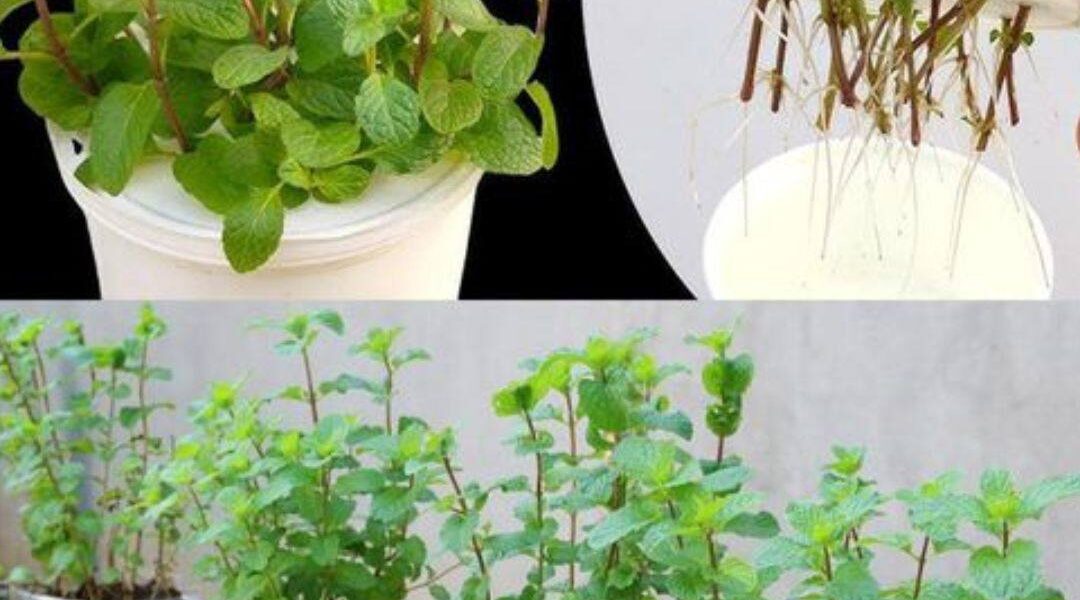The Ultimate Guide to Growing Mint at Home: Fresh Taste Right in Your Garden
Mint is a versatile and aromatic herb that can add a pop of flavor to your culinary creations, cocktails, and even homemade herbal teas. The good news is that you don’t need a green thumb or a large garden to enjoy the benefits of home-grown mint. With a little care and attention, you can easily grow mint at home, whether you have a large garden or just a small balcony. In this guide, we’ll walk you through the steps to growing this refreshing herb right on your doorstep.
Choosing the right type of mint:
Before you start growing mint, it’s important to choose the right variety of mint for your needs. The most common types of mint include peppermint, spearmint, and chocolate mint. Each variety has its unique flavor profile, so consider your intended culinary or medicinal use when making your selection.
Choosing the right location:
Mint is a hardy herb that can thrive in a variety of conditions, but it also has some preferences. Mint enjoys partial to full sunlight, so choose a location that receives at least 4 to 6 hours of sunlight daily. If you live in a hot climate, afternoon shade can help prevent the mint from drying out.
Planting mint:
You have two options for planting mint: seeds or cuttings. Although it is possible to start from seeds, many gardeners prefer to use cuttings from an established mint plant because it is faster and more reliable.
Using Cuttings: Obtain a mint cutting from a friend or purchase a healthy mint plant from a nursery. Cut a 4- to 6-inch piece from the top of a stem and remove the lower leaves. Plant the cutting in a well-drained pot or directly into your garden soil. Water thoroughly.
Using Seeds: Sow mint seeds in a pot or directly into your garden soil. Cover lightly with soil, water gently, and keep the soil evenly moist until seedlings emerge.
Caring for Your Mint Plant:
Mint is a relatively easy-care herb, but it does require some care to thrive:
Watering: Mint prefers evenly moist soil. Water your mint plant when the top inch of soil feels dry to the touch. Be careful not to overwater, as mint does not like to sit in soggy soil.
Fertilizing: Mint does not need much fertilizer. During the growing season, you can use a balanced, all-purpose fertilizer sparingly. Pruning
: Prune your mint regularly to encourage bushier growth and prevent it from becoming too leggy. Pinch back the stem tips to encourage branching.
Pest Control: Mint is relatively resistant to pests, but you may experience problems with aphids or spider mites. Check your plant regularly and take action if you notice any problems.
Harvesting Mint:
You can start harvesting mint leaves once your plant is established, usually after a few months. Harvest in the morning when the oils are most concentrated for the best flavor. Simply snip the leaves or cut entire stems, leaving a few inches of growth to encourage regrowth.
Using fresh mint:
Fresh mint leaves can add flavor to a variety of dishes and drinks. Use them in salads, soups, sauces, cocktails, and homemade herbal teas. If you have plenty of mint leaves, you can also dry them for later use.
Growing mint at home is a rewarding experience that can enrich your culinary adventures and add a fresh, aromatic flavor to your dishes. With the right care and attention, you can enjoy a bountiful supply of this versatile herb right on your doorstep. So start your own mint garden—you’ll be amazed by the results!
